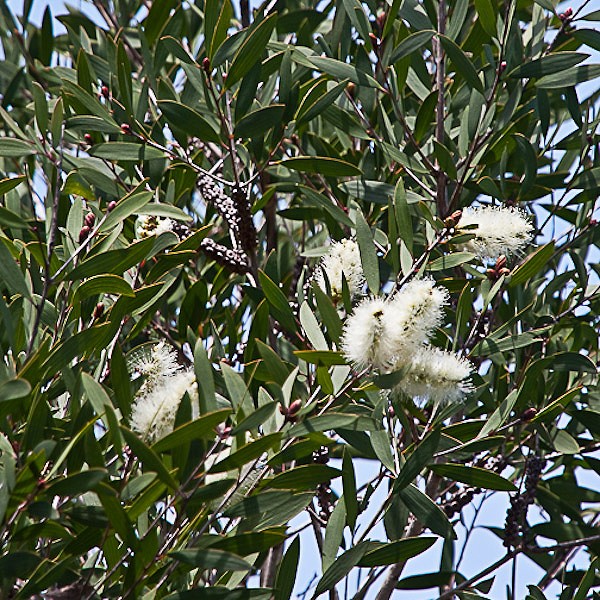In a lush tapestry of nature’s wonders, where vibrant foliage and gentle whispers of the wind intermingle harmoniously, there exists a controversial figure, the Melaleuca tree. While some may find solace in its slender silhouette and fragrant allure, others argue vehemently against its very existence. Today, we delve into the enigmatic realm of Melaleuca, seeking answers to the timeless question: Why are these enigmatic arboreal creatures considered “bad”? Welcome to a journey filled with intriguing revelations and compelling insights as we impartially explore the darker side of the Melaleuca tree phenomenon. Brace yourself, as the truth may not be what you expect.
A Troublesome Invasion: Melaleuca Trees’ Negative Impact on Ecosystems
Melaleuca trees, with their picturesque appearance and delicate white flowers, may seem harmless at first glance. However, these seemingly innocent trees have proven to be a troublesome invader, wreaking havoc on various ecosystems. Their negative impact on the environment cannot be ignored, for they pose a significant threat to biodiversity, water resources, and native species alike.
One of the main reasons why melaleuca trees are considered detrimental is their ability to outcompete native plants for resources such as sunlight, water, and nutrients. This aggressive nature ultimately leads to a decrease in biodiversity, as native plants struggle to survive and reproduce. Furthermore, melaleuca trees have the capability to form dense stands or monocultures, dominating large areas and preventing other plant species from establishing themselves. This disruption of the natural balance can have cascading effects, altering the entire ecosystem’s structure and function.
Additionally, the high water consumption of melaleuca trees poses a significant threat to water resources, particularly in areas with limited water availability. These non-native trees consume excessive amounts of water, contributing to the desiccation of wetlands and streams. The loss of vital water sources not only affects aquatic life but also impacts the availability of water for human consumption and agricultural purposes. Moreover, some studies suggest that melaleuca leaves release chemicals that can alter the chemical composition of soil, further exacerbating the negative impact on surrounding ecosystems.
In conclusion, it is evident that melaleuca trees have a profoundly negative impact on ecosystems. Their aggressive nature, ability to outcompete native plants, and high water consumption make them a troublesome invader. To mitigate their harmful effects, efforts must be made to control and manage melaleuca populations, allowing native species to thrive once again.
| Features | Tips |
|---|---|
| Rapid growth: Melaleuca trees can grow up to 8 feet per year. | Regular monitoring: Keep an eye out for any signs of melaleuca tree invasion. |
| Adaptability: Melaleuca trees can tolerate a wide range of soil and environmental conditions. | Early intervention: Act quickly to control and remove young melaleuca trees before they establish themselves. |
| Invasive root system: Melaleuca trees have aggressive roots that can damage structures and block waterways. | Seek professional help: Consult with experts or local authorities to develop an effective eradication plan. |

A Threat to Biodiversity: How Melaleuca Trees Displace Native Plant Species
Melaleuca trees, also known as paperbark trees, have become a growing concern when it comes to preserving biodiversity. These invasive species have been found to pose a significant threat to native plant species, disrupting the delicate balance of ecosystems worldwide.
One of the
main reasons why melaleuca trees are considered bad for the environment is their ability to outcompete native plants for resources such as water, nutrients, and sunlight. With their fast growth rate and dense foliage, melaleuca trees create a dense canopy that blocks sunlight from reaching the forest floor, preventing the growth of native plants. This leads to a reduction in biodiversity as native plant species struggle to survive in the shade.Additionally, melaleuca trees have a unique adaptability to different soil types, allowing them to aggressively colonize areas and displace native species. They reproduce both by seed dispersal and vegetatively through root suckers, further contributing to their rapid spread. Moreover, their long taproots enable them to access water sources deep underground, giving them a competitive advantage over native plants in dry conditions.
To better understand the impact that melaleuca trees have on ecosystems and how to mitigate their spread, it’s important to consider some key features and tips. Here is a table highlighting useful information:
| Features | Tips ————–|—————————-|———————————-
- Growth Rate | Fast-growing | Identify and remove young trees
- Canopy | Dense foliage | Promote the growth of native plants
- Reproduction| Seed dispersal, suckering | Spray herbicides or use mechanical
| | methods to control their spread
By re
cognizing the negative effects of melaleuca trees on biodiversity and implementing effective control measures, we can strive towards preserving and restoring harmonious ecosystems that support a diverse range of native plant species.
Unraveling the Issues: The Environmental and Economic Consequences of Melaleuca Tree Overgrowth
Melaleuca trees, native to Australia, have become a cause for concern in various parts of the world due to their negative impact on the environment and economy. One of the main issues with melaleuca trees is their aggressive growth rate. These trees can quickly take over native plant species, disrupting natural ecosystems and reducing biodiversity. As they grow, melaleucas form dense stands, shading out other plants and making it difficult for them to thrive. This can have a detrimental effect on local flora and fauna, as well as disrupt the natural balance of the ecosystem.
Furthermore, melaleuca trees have adaptations that allow them to survive in environments with low water availability, making them highly invasive in areas with adequate rainfall. They consume large amounts of water, depleting local water sources and exacerbating drought conditions. Additionally, their abundant pollen production poses a threat to individuals with pollen allergies. The spread of melaleuca trees can also lead to increased fire hazards, as their oil-rich leaves and bark make them highly flammable. The ecological and economic consequences of melaleuca tree overgrowth are far-reaching, impacting not only the natural environment but also industries such as agriculture, tourism, and forestry.

